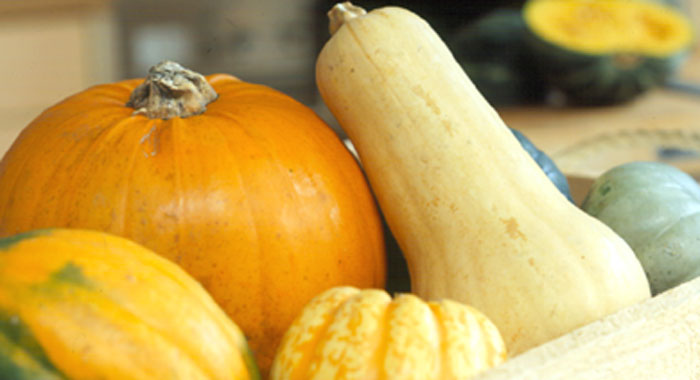
Pronounce it: pump-kin
Pumpkins are the most famous of all the winter squashes, and are most associated with Halloween lanterns. Inside the hard orange or yellow skin, the bright orange flesh is sweet and honied. They are a particularly good source of fibre, as well as a range of vitamins and minerals.
Read more about the health benefits of pumpkin and see our step-by-step guide on how to carve a pumpkin lantern for Halloween.
Availability
British season runs from October to December.
Choose the best
Go for pumpkins that feel heavy for their size, with a smooth, firm skin. Smaller pumpkins tend to have more flesh.
Prepare it
As pumpkins have very tough skins, some hard graft is needed to get into them. Put the squash on a thick teatowel to keep it steady, then use a large strong knife to cut it in half. It can be heavy going, so work in sections until you reach the bottom. If the skin is particularly thick, you may need to hammer the knife in with a rolling pin. Once one side is cut, turn the pumpkin round and cut down on the other side, until it’s split in two. Scoop out the seeds and any stringy parts. If the pumpkin is particularly big, cut it into quarters then, using a small, sharp knife, pare off the skin (unless you plan to roast it, in which case the skin can stay on). Then cut into chunks or wedges as required.
Store it
Kept in a cool, dark, well-ventilated place, it will keep for several weeks. Once cut, it should be kept in an airtight container in the fridge, where it will keep for around a week.
Cook it
Cut into chunks and bake or roast (30-40 minutes) or boil (15-20 minutes). Use to make soups, add to stews or mash as a side dish.
Alternatives
Try squash.
Be the first to comment on "Pumpkin"